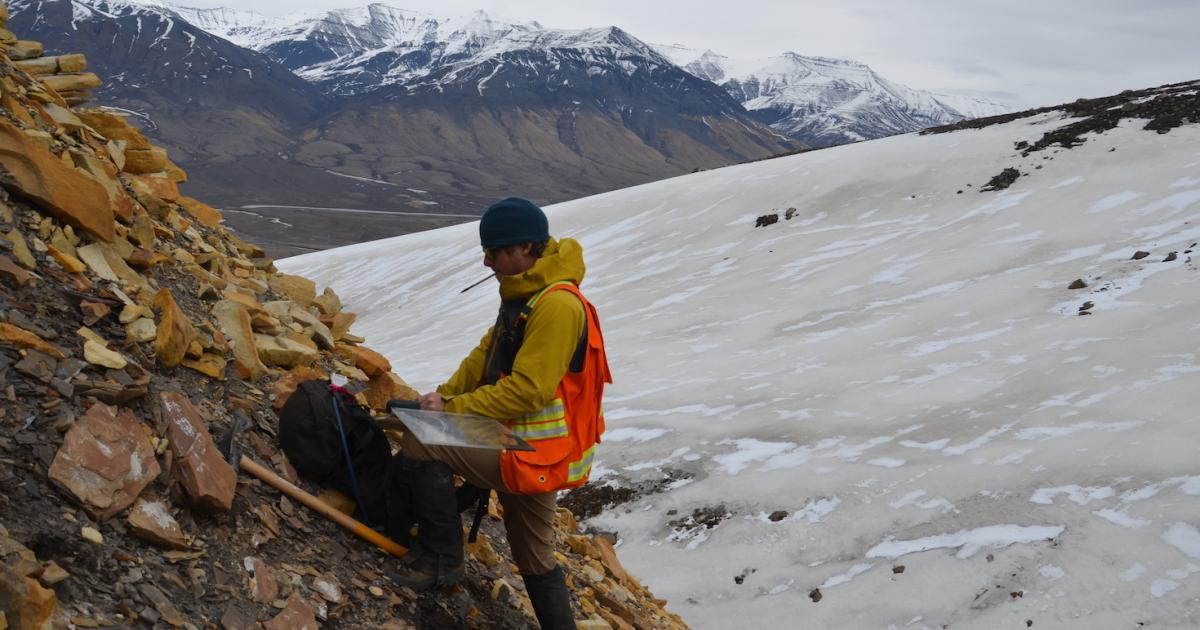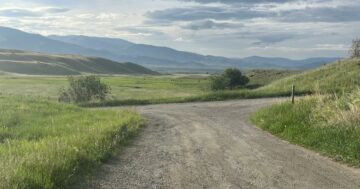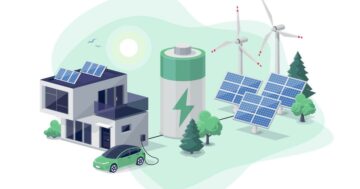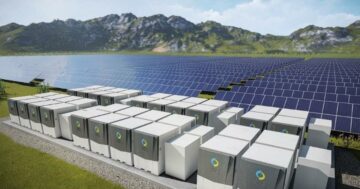
More, more, more metals mining is one of the biggest clean energy memes of 2023.
It’s easy to see why. The need for critical minerals powering the economic transition away from fossil fuels is exploding. Here’s a data point that kind of blows my mind: Demand for lithium — critical for batteries that power electric vehicles, not to mention storage components for wind and solar farms — tripled over the past five years, according to a report out last week by the International Energy Agency. Meanwhile, the appetite for cobalt and nickel is also growing by double-digit percentages.
That’s got people freaking out over the potential for “reckless” exploration and development by mining companies — especially in Indigenous territories and the pristine deep-sea floor.
Just last week, Rep. Ed Case (D-Hawaii) introduced two congressional measures that would protect American waters from deep-sea mining until we can thoughtfully research the potential consequences of messing with largely unexplored ecosystems.
The bills would also prohibit American companies from engaging in these activities on the high seas and require the U.S. to support moratoriums in international waters until the International Seabed Authority, charged with regulating those seascapes, can get its act together and pass some rules governing these efforts.
Spoiler: The organization has blown some deadlines. That is of little concern to some mining companies that are raring to go, in the absence of any rules. Sounds like new-age piracy to me, and the damage could be devastating to an ecosystem that could host up to 10 million marine species.
“Seabed mining could take a number of destructive forms, including methods which would shear off seamounts on the ocean floor, the functional equivalent of strip mining,” Case said in announcing the legislation.
Anyway, how can we sate the appetite of minerals-hungry EV companies, wind and solar developers while protecting marine ecosystems and avoiding the sort of degradation associated with traditional mining methods?
AI to the rescue?
The AI-ification of everything could be part of the recipe. In this case, artificial intelligence could help humans find new sources for substances such as lithium, cobalt, copper and nickel more quickly and, theoretically, with less environmental degradation than previous methods.
That’s the message from a trio of startups that recently managed to close impressive venture rounds, despite a cooler funding climate for climate tech. The biggest infusion went to KoBold Metals of Berkeley, California, which in late June disclosed $195 million in backing led by T. Rowe Price and including Breakthrough Energy Ventures and the venture arms of mining giant BHP and conglomerate Mitsubishi.
The other two companies are earlier-stage ventures. GeologicAI of Calgary, Alberta, is also a Breakthrough Energy investment; it disclosed a $20 million Series A round in late June. Boston-based VerAI Discoveries revealed its Series A infusion of $12 million back in early March. It, too, counts T. Rowe Price as an investor, along with Orion Resource Partners, Chrysalix Venture Capital and Blumberg Capital.
What’s AI got to do with it?
Each startup is using AI to address exploration — with a view to helping mining companies find concealed mineral deposits. But they all offer a unique twist.
VerAI’s model is all about analytics, about “searching in the data space rather than the physical space,” according to CEO and co-founder Yair Frastai. “There are no longer ‘easy’ discoveries when it comes to mining, as the vast majority of remaining ore deposits are concealed under fast covered terrain,” he said in a statement. “Historically, covered terrain is challenging human exploration techniques, meaning a massive range of opportunities is being missed.”
The company uses AI to identify places where minerals exist — it’s focused on lithium, cobalt, nickel, copper, zinc, gold, silver and molybdenum. Then, it finds partners to follow through with exploration, discovery and extraction. So far, it’s focused on possible assets in Arizona, Chile, Nevada, Ontario and Peru.
“We can bring responsible exploration with a much better success rate,” Frastai said. He claims that VerAI can shrink the exploration window from three to four years to two months, while cutting costs from $3 million to $5 million versus $250,000.
KoBold is likewise primarily an analytics company using machine learning and scientific data to narrow down prospects for exploration. Its technology is only used for projects where it has an interest. The company is actively involved in Zambia, in the Chililabombwe District, where the company recently acquired a license for the rich Mingomba Deposit.
Data suggests that the site contains a high grade of copper — 3.64 percent, versus the average of 0.39 percent under development globally. The higher the grade, the less rock that has to be extracted in the process.
So far, KoBold is working on 50 exploration “properties” related to copper, cobalt, lithium and nickel. The company estimates it will take at least eight years to turn the Mingomba location into an “operating mine.” But it could be a huge boon for the area: helping the country grow from producing about 850,000 metric tonnes annually to over 3 million metric tonnes within a decade, according to KoBold’s press release.
GeologicAI’s approach combines AI with “robot geologists” that use hyperspectral data, sensors, high-resolution imaging and X-ray fluorescence to examine rock samples — essentially creating a digital “twin” of a deposit using samples. The mission is to help human geologists gather data more quickly from cores drilled at a site than is possible using manual techniques.
Breakthrough Energy’s Carmichael Roberts, business lead for its investment committee, said the critical need to increase quantities of minerals such as copper, nickel, cobalt and lithium drove the firm’s interest in AI for sustainable mining. “GeologicAI’s multisensor core scanning robots and AI-assisted analysis are a powerful combination, and we believe their technology will significantly accelerate key mineral discovery and recovery,” he said.
What big mining companies are digging into AI as a means of moving toward more sustainable extraction? Send potential case studies, tips and ideas for exploration to [email protected].
- SEO Powered Content & PR Distribution. Get Amplified Today.
- PlatoData.Network Vertical Generative Ai. Empower Yourself. Access Here.
- PlatoAiStream. Web3 Intelligence. Knowledge Amplified. Access Here.
- PlatoESG. Automotive / EVs, Carbon, CleanTech, Energy, Environment, Solar, Waste Management. Access Here.
- BlockOffsets. Modernizing Environmental Offset Ownership. Access Here.
- Source: https://www.greenbiz.com/article/ai-could-be-recipe-faster-less-destructive-minerals-mining
- :has
- :is
- :not
- :where
- $10 million
- $3
- $UP
- 000
- 10
- 2023
- 39
- 50
- 7
- a
- About
- accelerate
- accelerating
- According
- acquired
- Act
- actively
- activities
- address
- agency
- AI
- alberta
- All
- along
- also
- American
- an
- analysis
- analytics
- and
- Announcing
- Annually
- any
- appetite
- approach
- ARE
- AREA
- arizona
- arms
- article
- artificial
- artificial intelligence
- AS
- Assets
- associated
- At
- authority
- average
- avoiding
- away
- back
- backing
- batteries
- BE
- being
- believe
- Berkeley
- Better
- Big
- Biggest
- Bills
- breakthrough
- bring
- business
- but
- by
- calgary
- california
- CAN
- capital
- case
- Case Studies
- ceo
- challenging
- charged
- Chile
- claims
- clean energy
- Climate
- Close
- Co-founder
- combination
- combines
- comes
- committee
- Companies
- company
- components
- Concern
- conglomerate
- Congressional
- Consequences
- contains
- Copper
- Core
- Costs
- could
- country
- covered
- Creating
- critical
- cutting
- damage
- data
- decade
- Demand
- deposit
- deposits
- Despite
- devastating
- developers
- Development
- digital
- discovery
- district
- do
- down
- Early
- easy
- Economic
- economy
- ecosystem
- Ecosystems
- ed
- efforts
- eight
- Electric
- electric vehicles
- energy
- engaging
- environmental
- Equivalent
- especially
- essentially
- estimates
- Ether (ETH)
- EV
- everything
- examine
- exist
- exploration
- extraction
- far
- Farms
- FAST
- faster
- Find
- finds
- five
- Floor
- focused
- follow
- For
- forms
- fossil
- fossil fuels
- four
- Free
- from
- fuels
- functional
- funding
- gather
- get
- giant
- Globally
- Gold
- governing
- grade
- great
- Greenpeace
- Grow
- Growing
- he
- help
- helping
- High
- high-resolution
- higher
- historically
- host
- House
- How
- HTTPS
- huge
- human
- Humans
- ideas
- identify
- IEA
- Imaging
- impressive
- in
- Including
- Increase
- infusion
- insight
- Intelligence
- interest
- International
- into
- introduced
- investment
- investor
- involved
- IT
- ITS
- jpg
- june
- Key
- Kind
- largely
- Last
- Late
- lead
- learning
- least
- Led
- Legislation
- less
- License
- like
- likewise
- lithium
- little
- location
- longer
- machine
- machine learning
- Majority
- managed
- manual
- March
- Marine
- massive
- me
- meaning
- means
- Meanwhile
- memes
- mention
- message
- Metals
- methods
- metric
- million
- mind
- mineral
- minerals
- Mining
- Mining Companies
- missed
- Mission
- model
- months
- more
- moving
- much
- my
- narrow
- Need
- NEVADA
- New
- Newsletter
- Nickel
- no
- node
- number
- ocean
- Ocean Floor
- of
- off
- offer
- on
- ONE
- only
- Ontario
- operating
- opportunities
- organization
- Other
- our
- out
- over
- part
- partners
- pass
- past
- People
- percent
- percentages
- peru
- physical
- Piracy
- Places
- plato
- Plato Data Intelligence
- PlatoData
- Point
- possible
- potential
- power
- powerful
- Powering
- press
- previous
- price
- primarily
- process
- producing
- prohibit
- projects
- properties
- prospects
- protect
- protected
- protecting
- quickly
- range
- Rate
- rather
- recently
- recipe
- recovery
- regulating
- related
- remaining
- require
- rescue
- research
- resource
- responsible
- Revealed
- Rich
- robot
- robots
- Rock
- rounds
- rules
- s
- Said
- scanning
- scientific
- searching
- see
- send
- sensors
- Series
- Series A
- significantly
- Silver
- site
- So
- so Far
- solar
- some
- Sources
- Space
- startup
- Startups
- Statement
- storage
- Strip
- studies
- success
- such
- Suggests
- support
- sustainable
- t. rowe price
- Take
- tech
- techniques
- Technologies
- Technology
- territories
- than
- that
- The
- The Area
- their
- then
- There.
- These
- they
- this
- those
- three
- Through
- tips
- to
- too
- toward
- traditional
- transition
- Trends
- trio
- TURN
- twin
- twist
- two
- u.s.
- under
- unique
- until
- use
- used
- uses
- using
- Vast
- Vehicles
- venture
- venture capital
- Ventures
- Versus
- View
- want
- Waters
- we
- week
- went
- when
- which
- while
- why
- will
- wind
- window
- with
- within
- working
- would
- x-ray
- years
- zephyrnet








